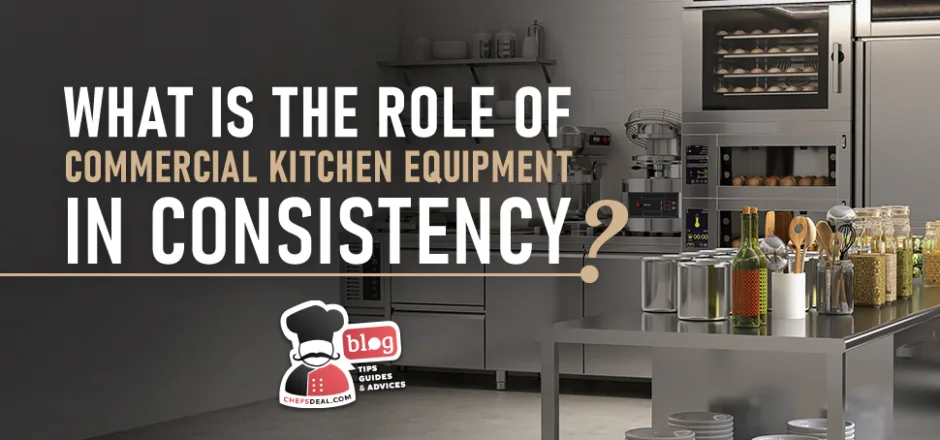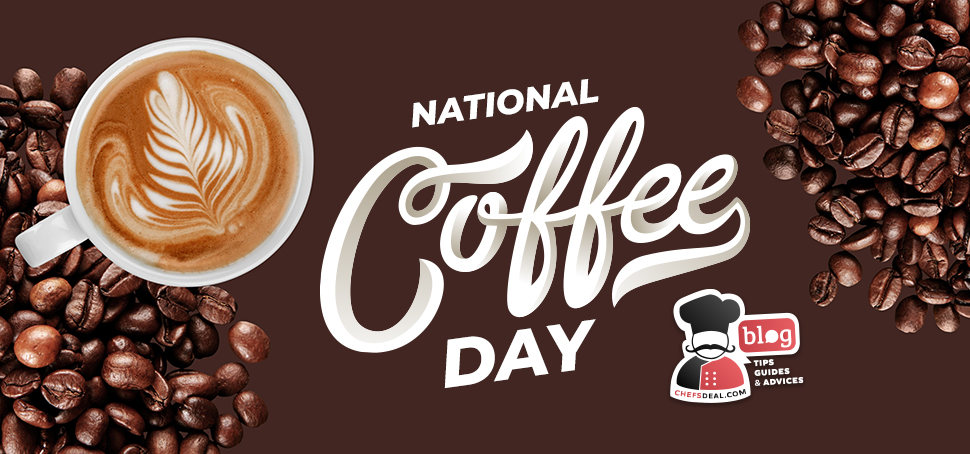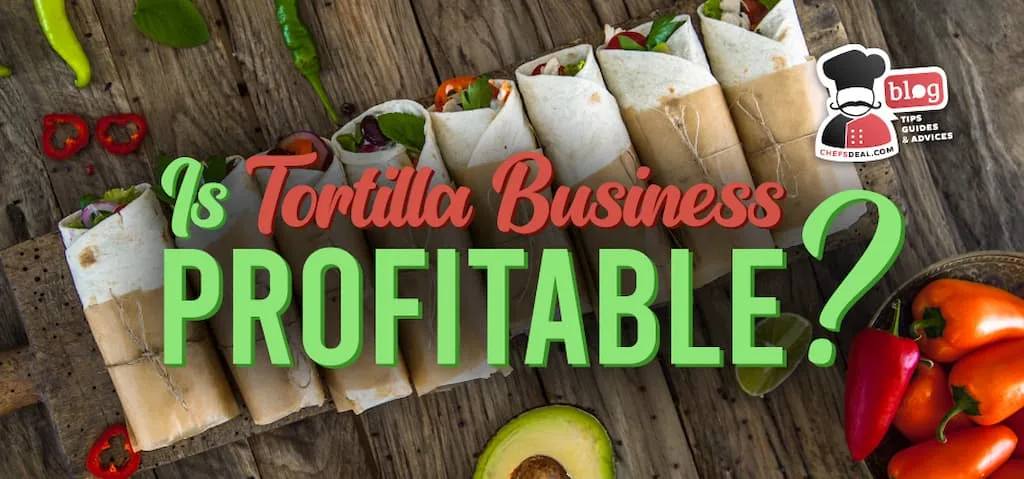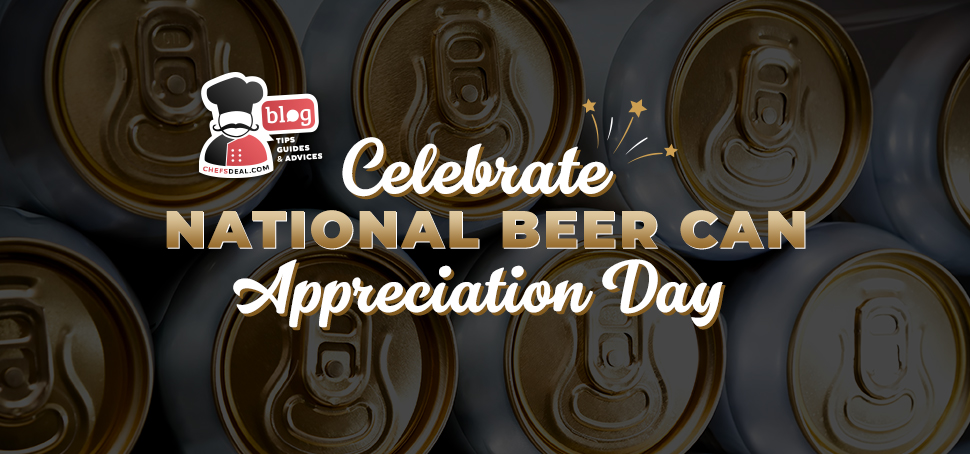Consistency in a restaurant sets the foundation for customer loyalty and quality assurance. It ensures that the food’s taste, aroma, texture, portion, and presentation are uniform across all servings. Regular patrons return with the expectation of reliving their previous satisfying dining experiences.
Achieving such consistency is challenging yet imperative for smooth business operations. This is where the role of commercial kitchen equipment becomes critical. Items like convection ovens provide even cooking for a reliable texture, while refrigerators maintain proper temperatures to prevent spoilage and flavor loss, thereby upholding flavor consistency. These appliances’ precise programs and settings are key to delivering consistent, high-quality outcomes.
What are The Key Restaurant Equipment for Maintaining Consistency?
Commercial kitchen equipment has a direct effect on consistency in foodservice businesses. They provide consistency in the food’s quality, texture, taste, and portions with precise temperature and time controls. We have listed some of the key restaurant equipment below:
Commercial Ovens
Commercial ovens are designed specifically for cooking large amounts in little time without sacrificing quality. There are several types of ovens, but they all ensure consistency and uniformity in every dish they cook and bake.
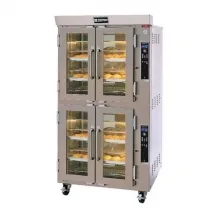
Convection Oven: A convection oven ensures consistent heat in every point of the cabinet with the fan it features. The fan distributes the heat throughout the oven, cooking even more rapidly and eliminating burns or cold points. They work great, especially for baking bread or pastries, providing uniformity and consistency inside and on the crust.
Combination oven: A combi oven is a combination of steamer and convection oven. It cooks using hot air, steam, or both, providing consistency and rapid cooking while eliminating burns or the food from burning and drying out. They give perfect and consistent results by controlling the moisture levels and precise temperature controls. They come in different sizes, often determined by the number of their trays.
Conveyor Oven: Commercial conveyor ovens feature a conveyor belt where the food is placed from one opening, goes past heating elements, and comes out perfectly cooked from the other opening. The constant speed of the belt ensures consistency in every dish. They can cook pies, pizzas, burritos, and similar dishes consistently, as long as they fit the 3-5” (7.62 – 12.7 cm) opening.
Commercial Mixers
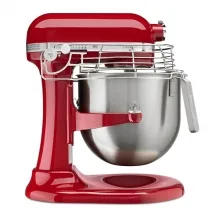
Commercial mixers mix, knead, and combine batches of dough and batters easily and consistently. This versatile equipment features variable mixer heads and attachments, making them useful for various jobs. The strong motor and attachments reach every point of the bowl, ensuring consistency in the flavor and texture of the product.
In planetary mixers, also known as cake mixers, the bowl stays sturdy while the hook rotates inside the bowl to mix the ingredients.
In dough mixers, often called spiral mixers, the bowl rotates while the mixing mechanism stays still, unlike planetary mixers. The bowl ensures consistency by pushing all the ingredients past the hook, which works great for hard dough.
Sous-Vide Machines
Sous vide machines heat water in a tub to slowly cook vacuum-sealed food. Sous vide machines heat water using heated metal coils to maintain a consistent temperature for the cooking water. Vacuum sealing the food in a bag will make the food maintain its flavor, texture, and moisture. The precise control of temperature in sous vide machines ensures consistent results.
Commercial Deep Fryers
Modern deep fryers come with some efficient features to ensure consistency in the kitchen. These are load compensation, filter tracking, and proportional control. Load compensation adjusts the cooking time automatically depending on the amount of food frying. The use of proportional control keeps oil from heating over predetermined levels while cooking. These features ensure precise temperature and time control, which results in consistent results, achieving the same crispiness every time.
Griddles & Flat Top Grills
Flat-top grills and griddles are versatile cooking equipment featuring a flat metal surface heated by either gas, electric, or coal. They can be used for cooking, browning, frying, and grilling various foods evenly thanks to their uniformly heating flat surface. The surface can be made of cast iron, which is the most popular, steel, and chromed steel, all providing even heating to ensure consistency. They can consistently cook pancakes, burgers, sandwiches, and breakfast items such as bacon and eggs at every point.
Commercial Ranges
Commercial ranges are the keystones of every kitchen with their versatility and extra functions. Commercial ranges can come with grills or griddles, open-top burners, oven bases, and hot plates, letting you steam, simmer, fry, sauté, boil, braise, stew, and if it has an oven bake, roast, and broil any food consistently with precise temperature settings. You can opt for a griddle or grill top range if you constantly cook pancakes, eggs, hamburgers, steaks, and bacon in your kitchen. Open-top burners will be a good option for restaurants that cook soup, sauces, chili, and any other pan-cooked food.
Steamers
Commercial steamers are great equipment to rapidly cook seafood, veggies, and rice, maintaining their flavor, color, texture, moisture, and nutrients, providing a healthier meal. By cooking with the help of steam, steamers ensure uniformity and consistency in all dishes.
Steamers come in three types: boilerless, pressureless, and boiler-based. In boiler-based steamers, the boiler is inside the cabinet, while boilerless steamers use another compartment to heat the water. On the other hand, in pressureless steamers, food is in direct contact with steam, and chefs can open the unit’s doors when it’s working for seasoning or to check the food.
Blast Chillers
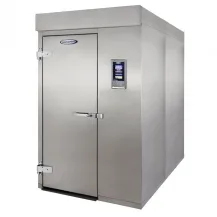
A blast chiller is used to cool food items rapidly using cold airflow. This process aims to create fewer crystals during quick cooling and bring the food to safe temperatures in a short time, preventing bacteria growth.
Large ice crystals will melt during defrosting, leaving excess moisture and affecting the flavor and texture of the food. Blast chiller ensures rapid cooling to prevent this and provide food safety and consistency in texture. Various settings let you freeze food items, whether hot, warm, or cold.
Food Processors
A food processor is a versatile equipment used to accomplish repetitive tasks in the prep process, reducing prep time and labor of the employees. With multiple interchangeable blades and disks, a food processor can chop, dice, slice, puree, grind, knead, and juice, ensuring consistency in shape, which affects the texture and cooking time of dishes and the presentation.
They also minimize food waste and mess. They can be seen as an alternative to commercial blenders, but the processors’ changeable attachments and more powerful motors make them efficient for high volumes and bulk amounts.
Dough Sheeters
Whether for pastry, pizza, pasta, or bakery goods, the dough needs to be uniform and smooth without lumps to bake uniformly and properly. This is what a dough sheet does, removing the need for hand-rolling, which saves considerable time and ensures consistency in cooking. You only need to put the dough between two rollers where it will be compressed and flattened consistently, ensuring it will be uniformly baked.
Thermal Circulators
Thermal circulators, also known as immersion circulators, are another type of sous vide machine that heats water and circulates it to maintain precise temperatures. They don’t come with a tub but can be attached to any pot or water tub. Sous vide cooking maintains foods’ juice and flavors inside, keeps them moist, preserves the shape volume, and prevents meats or other food from drying out and losing their volume. Circulating the water for a set time after heating it to the precise temperatures gives consistent results without overcooking.
Salamanders and Broilers
A salamander oven or broiler is a specialty kitchen equipment designed to finish cooked dishes. Salamander oven uses infrared or radiant heating directed right at the food to consistently brown, toast, caramelize tops of food and desserts, and melt the cheese. Some models can be used to keep food warm and at safe temperatures by setting it to lower temperatures.
Sauce and Beverage Dispensers
Commercial sauce and beverage dispensers are designed to dispense a precise amount of ingredients, whether sauces or beverages. Giving the same amount ensures consistency in the amount of beverages for serving and sauces for a consistent flavor, facilitating the process without adjusting the portions and reducing waste.
Vacuum Sealers
A vacuum sealer extends the lifetime of products by placing them in bags and removing air from the bag by vacuuming and sealing. This process cuts the product’s contact with air, which delays spoilage, reducing food waste. Vacuum sealing food in packages will also help marinate meats, letting the food absorb the sauces better and consistently. Vacuum-sealed food will also take up less space in refrigerators and freezers, saving you extra space.
What is the Role Of Automation In Kitchen Consistency?
The role of automation in cooking processes is one of the easiest yet effective factors to ensure consistency in kitchens. Presets, temperature, time controls, automatic features of the equipment such as automatic fill and drain in fryers, sensor technology in ovens, and pressure control systems are all designed to ensure consistent outcomes and quality.
Programming or adjusting presets removes the need for repetitive temperature and time adjustments for the same dishes every time. After making presets based on your menu, the equipment will adjust the proper settings for the food item, preventing over or under-cooking. Programmable equipment will produce consistent results, simplify processes, and reduce prep times.
Importance of Calibration: Ensuring Equipment Plays Its Role
Calibration is essential in the commercial kitchen to guarantee precision and consistency. By regularly calibrating equipment, chefs can ensure that temperatures and measurements are accurate, leading to dishes that meet the exact standards customers expect. This practice not only upholds quality but also minimizes waste and enhances efficiency, solidifying the vital role of well-maintained equipment in a kitchen’s success.
Regular maintenance of the kitchen equipment will prevent any breakdown before it’s too late without interrupting the workflow. Regular maintenance will also affect the food quality and consistency. A malfunction can affect the working of equipment, so the consistency of cooking of a food item, such as a damaged oven, can over or underbake. To guarantee there is no error in the food and overall workflow of the kitchen, you need to ensure the equipment works properly.
How to Train Staff to Maximize The Role of Equipment?
Maximizing equipment efficiency to enhance kitchens’ consistency goes through proper staff education. Properly training kitchen staff about the use of equipment will enhance performance, reduce possible errors, and ensure they are using the equipment properly, resulting in consistent and quality dishes. Using the equipment correctly will ensure that equipment is used as efficiently as possible and give consistent outcomes.
What are the Challenges and Solutions in Achieving Consistency in The Foodservice Business?
There are some common challenges in achieving consistency that every restaurant experiences. Commercial kitchen equipment may help to overcome these problems by providing consistency and streamlined operations. Here are the 4 most common challenges and possible solutions.
1. Staffing Issues
Staff recruitment and turnover may cause inconsistencies in commercial kitchens. High staff turnover requires training from all over and may affect the consistency of food being cooked by different staff. Automated kitchen equipment with presets and variable programs can reduce the number of employees needed and help streamline operations.
2. Achieving Food Quality
Achieving quality and consistency in the flavor and texture of meals can sometimes be challenging due to differences in cooking procedures and staff expertise. Commercial kitchen equipment with precise temperature and time controls can help establish settings and programs for different meals, giving consistent results.
3. Food Safety
It is a must to prevent foodborne illnesses and ensure food safety and hygiene to comply with health and safety regulations, but it can be challenging sometimes. Commercial kitchen equipment can help improve and produce consistent hygiene procedures with their specific features, such as dishwashers with high-temperature sanitizing cycles, cooking equipment with touchless interfaces, and precise temperature controls.
4. Food Wastage
Food wastage is one of the most common problems of food service businesses, which results in additional expenses and environmental effects. Using kitchen equipment providing precise portion controls, inventory management systems, and effective use of food ingredients can greatly help reduce food wastage and ensure consistency in the kitchen.
The Future Role of Commercial Kitchen Equipment in Enhancing Consistency
Equipment’s effect on kitchen consistency is undeniable, and every innovation and improvement in commercial kitchen equipment takes operations a step ahead and facilitates everyday jobs, boosting efficiency and enhancing consistency in food service businesses. Here are the 3 possible future commercial kitchen equipment features that will establish consistency in kitchens in a more advanced way.
Automation
AI is becoming a part of every modern-day matter, as in commercial kitchens. AI may help automate kitchen equipment for more precise results and inventory management by monitoring and adapting culinary operations in real time. It will increase consistency, reduce human error, and streamline operations.
Data
Data analytics of the cooking process, equipment and staff performance, demand forecasts, and food items are essential to manage inventory, ingredient procurement, and to improve recipes, which are collected by improved equipment, leading to consistency in commercial kitchens.
Sustainability
Waste is a total problem of food service businesses, which requires more sustainable and energy-efficient solutions. To provide consistent and ecologically responsible operations, future equipment will probably be more eco-friendly, energy-efficient, and water-saving.
Conclusion
The role of commercial kitchen equipment is more than cooking food in commercial kitchens. They are designed with various features and precise controls to ensure consistency and quality of food while also contributing to the overall consistency of operation. Each piece of equipment has different features to establish consistency, such as a timer, preset, portion control, and automation. When chefs’ culinary skills are combined with machine precision, it results in uniformity, quality, and consistency of the meals and the workflow.

